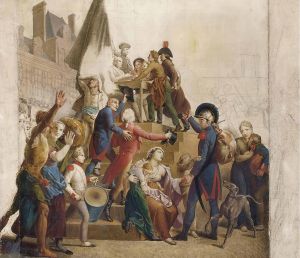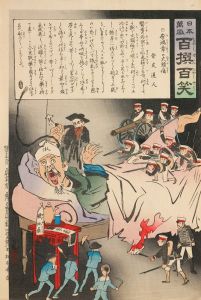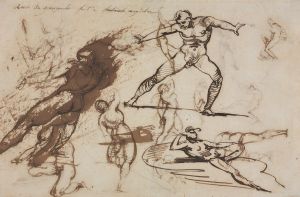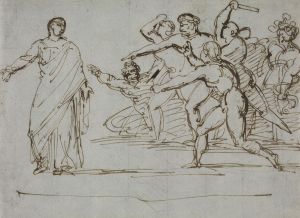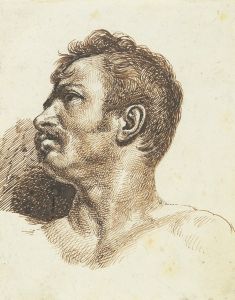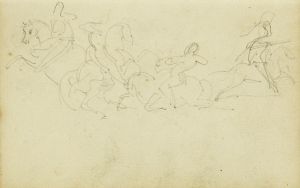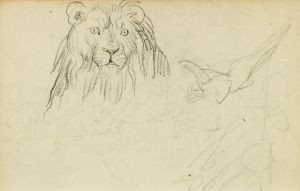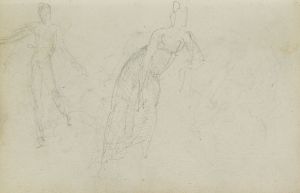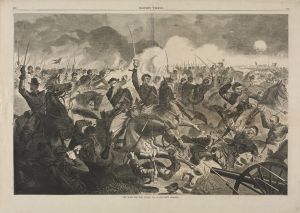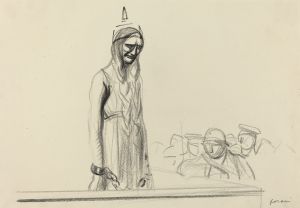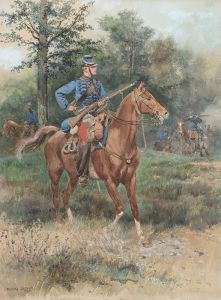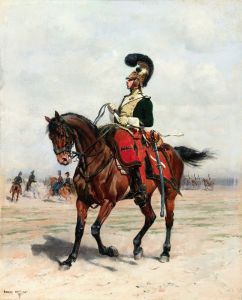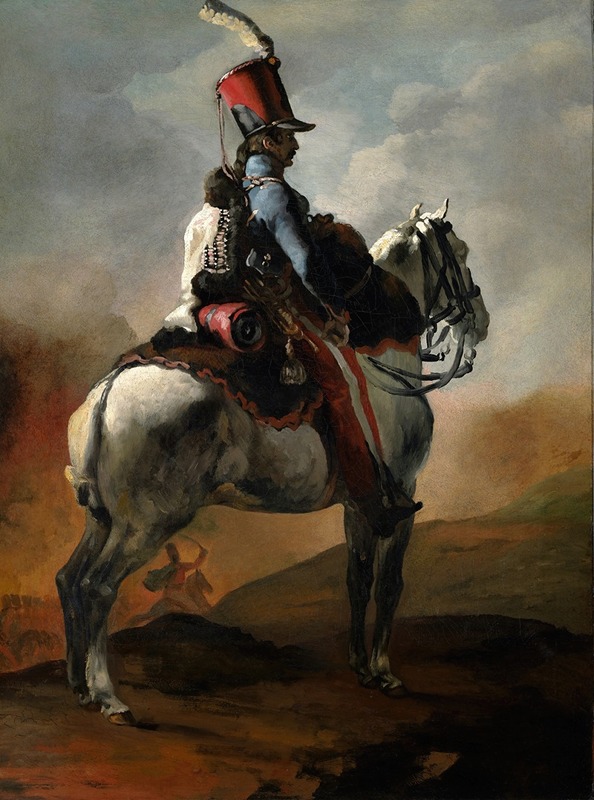
Trumpeter of the Hussars
A hand-painted replica of Théodore Géricault’s masterpiece Trumpeter of the Hussars, meticulously crafted by professional artists to capture the true essence of the original. Each piece is created with museum-quality canvas and rare mineral pigments, carefully painted by experienced artists with delicate brushstrokes and rich, layered colors to perfectly recreate the texture of the original artwork. Unlike machine-printed reproductions, this hand-painted version brings the painting to life, infused with the artist’s emotions and skill in every stroke. Whether for personal collection or home decoration, it instantly elevates the artistic atmosphere of any space.
"Trumpeter of the Hussars" is a painting by the renowned French artist Théodore Géricault, who is best known for his dynamic compositions and pioneering role in the Romantic movement. Géricault, born in 1791 in Rouen, France, demonstrated an early interest in art and went on to study under prominent artists such as Pierre-Narcisse Guérin. His work is characterized by a dramatic use of color and light, as well as a focus on contemporary subjects and themes.
The painting "Trumpeter of the Hussars" was created around 1814, during a period when Géricault was deeply influenced by the Napoleonic Wars and the military subjects that were prevalent in French society at the time. The Hussars were a type of light cavalry unit that played a significant role in the Napoleonic army, known for their distinctive uniforms and daring tactics. Géricault's interest in military themes is evident in several of his works, reflecting both the romanticized view of the soldier and the harsh realities of war.
In "Trumpeter of the Hussars," Géricault captures the essence of a hussar trumpeter, a figure who would have been responsible for relaying commands on the battlefield through musical signals. The painting is notable for its vivid portrayal of the trumpeter, who is depicted in the traditional, flamboyant uniform of the hussars, complete with a richly colored jacket and a fur-lined pelisse. The attention to detail in the uniform highlights Géricault's interest in the accuracy and authenticity of his subjects.
The composition of the painting is dynamic, with the trumpeter positioned in a way that suggests movement and readiness. Géricault's use of light and shadow adds depth to the figure, creating a sense of immediacy and presence. The background is typically less detailed, focusing the viewer's attention on the central figure and enhancing the dramatic effect.
Géricault's work during this period often explored themes of heroism and the human condition, and "Trumpeter of the Hussars" is no exception. The painting reflects the romantic idealization of the soldier, a common motif in the art of the early 19th century. However, Géricault's approach also hints at the complexities and ambiguities of military life, a theme he would explore more deeply in later works such as "The Raft of the Medusa."
While "Trumpeter of the Hussars" may not be as widely recognized as some of Géricault's other paintings, it remains an important example of his early work and his engagement with the themes of his time. The painting is housed in the Musée des Beaux-Arts in Rouen, France, where it continues to be appreciated for its artistic merit and historical significance.
Géricault's influence on the Romantic movement and subsequent generations of artists cannot be overstated. His innovative approach to composition, subject matter, and emotional expression paved the way for later artists such as Eugène Delacroix and the Impressionists. "Trumpeter of the Hussars" stands as a testament to Géricault's skill and his ability to capture the spirit of an era through his art.





